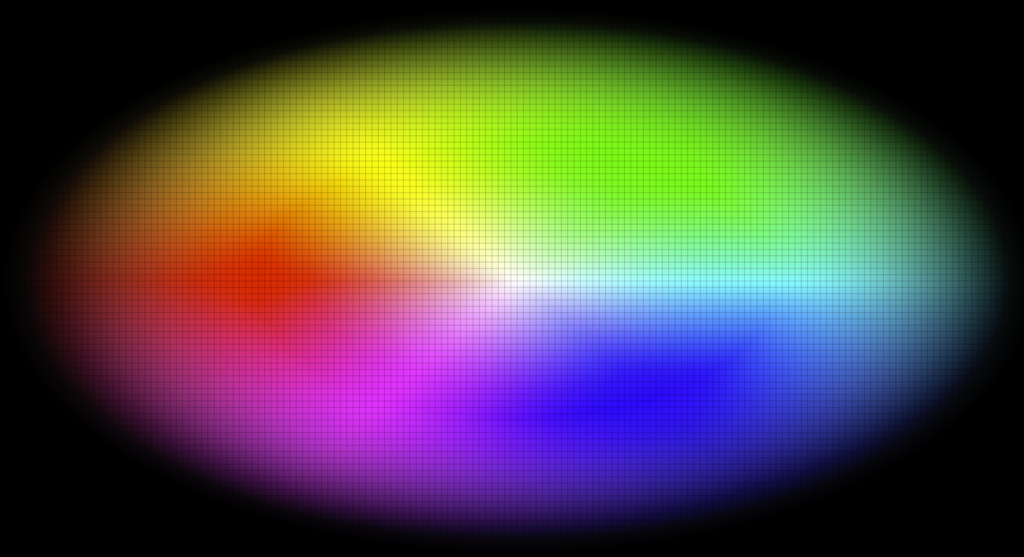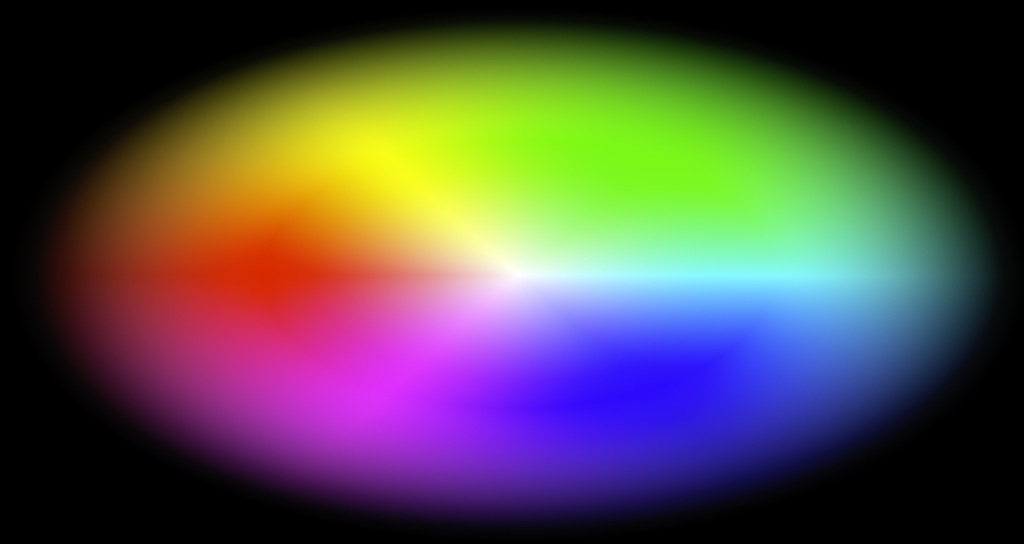- Version
- Download 8
- File Size 145.13 MB
- File Count 1
- Create Date 2024-01-15
- Last Updated 2024-01-15
Radial JND
There are 4 slides in this set. 2 are were created and saved as TIFFs in the 2020 color space and 2 were created and saved in the DCI-P3 color space.
[To be clear for those not in the cinema world, DCI-P3 has a different white point and a 2.6 gamma curve, while many people's television sets are now getting Display P3, a variation that Apple has converted to an international standard.]
The pairs are composed of all colors in each space in a radial pattern, plain and with a grid overlaid.
The color radials are composed with the center being white and the outside edge being black.
Each Radial is 4096 x 2160. The P3 image presents itself as smaller even though the design and the mask are identical – one guesses that this is because the mix of black is going to the same edges, but begins more quickly in the P3 space (???). You can also see differences between the P3 version and 2020 as the monochromatic colors go to white as well.
And, no, there is no reason that these couldn't be done in a circle – it is just that the screen is a rectangle and that is how the design started. If you want a circle or several circles, ask.
Anyway, these will next be shoved into FCPX to create a PQ 300 nit version for each, but that is a ways away.
The passcode seems to be the same as always:
QC_b4_QA
Please let me know how these work out in the real world.
There is also a version that goes to black in the center and goes to white on the outside edge. It is not included in this set as it seems a little off. It is available on request, but won't be distributed widely until it is tested in the field.
PS – These are called JND because the search is for the ability to see differences just using the eyes. After a system set up, what can one see? …how many boxes away to see a different color? Does that change over time? How different is a protected image compared to a direct view display image? I'm a little like Beethoven in this case, unable to see the finished product because no one has sent me a projector to try. …or a dark dark room.

